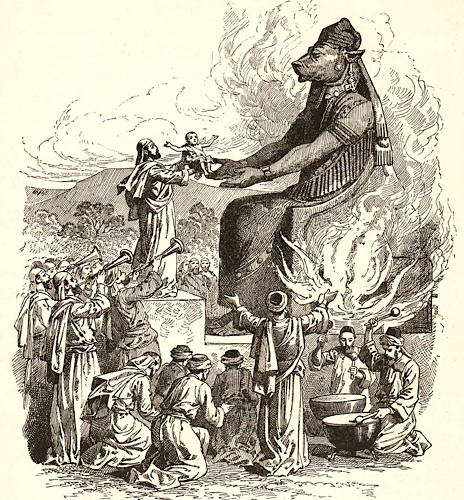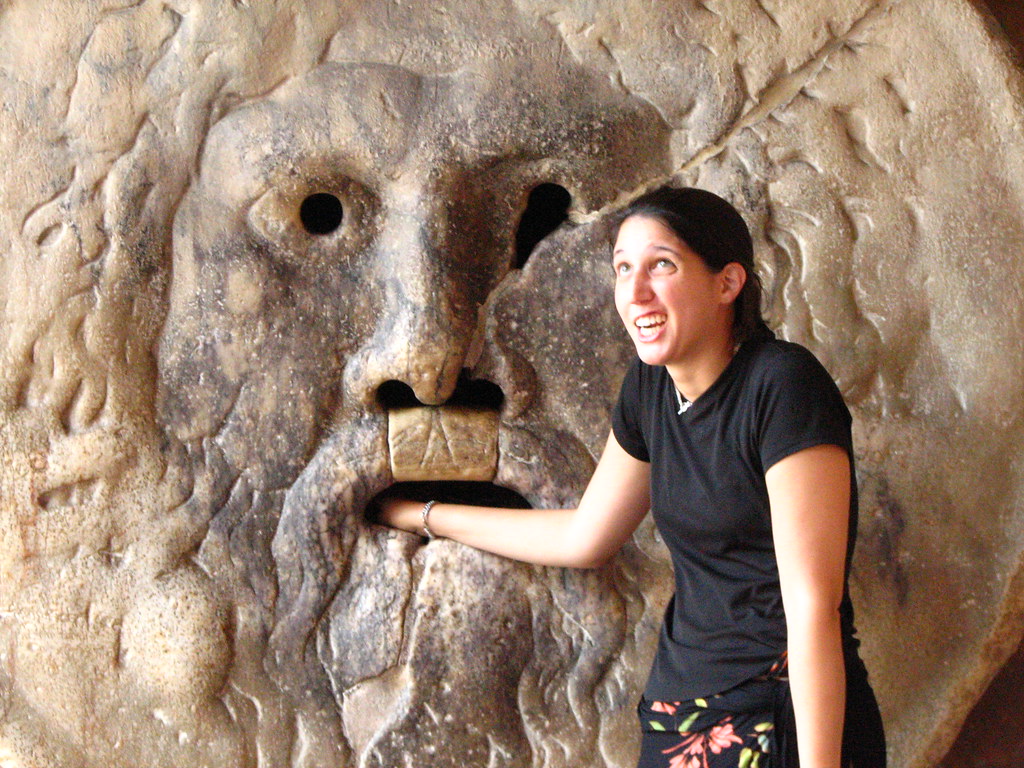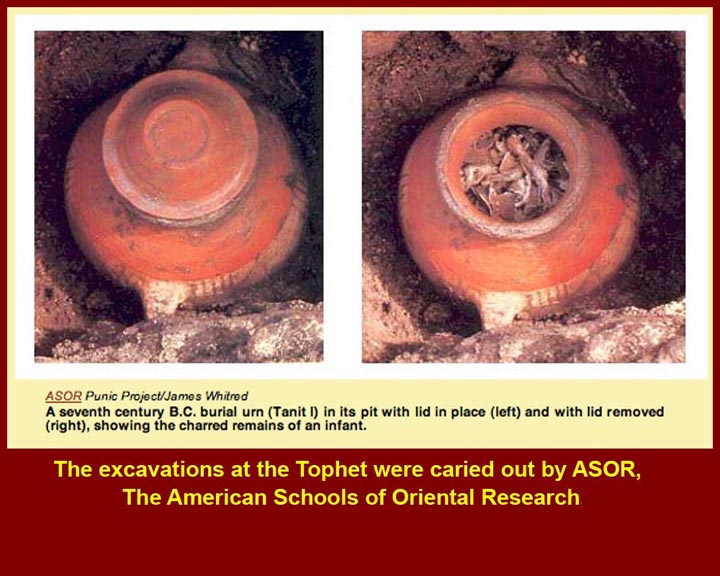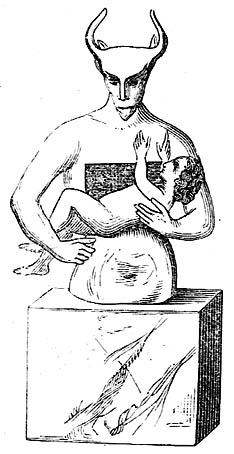Traveling within the World
Linking your favorite traveling artists across the globe

Quoting myself:
"Just a little, not much really. The only reason I even studied Phoenicia at all, was for language and some cultural values, before they treatied with Rome.I do know the history is a mess, in that most of the records about Carthage were destroyed during the Punic Wars. So, a lot of what we do know, are based on second hand accounts and/or speculation.
More recently, I've been revisiting the area to focus on the Necropolis. I'm kind of all over the place with what I study, and why.
From what I've read thus far, the priests would freak out and order the sacrifice of children. If I remember correctly, this is where the 'Prince of EGYPT' story get's the mass child sacrifice story (do you remember that from the Disney film?) Something like 200 kids, thrown in the fire. I think in the movie, they were fed to crocodiles.
When I was studying cultural music, for the Ecstasia class. I know they played the tambourine to drown out the cries of the parents, who were in agony over their children being seized and killed. This indicates to me, that these were not willing sacrifices.
A lot of it was political too, there were 500+ nobles killed as 'sacrifices', and this indicates to me that 'sacrifice' wasn't always used for religious purposes, but more or less to get rid of people. Sounds a lot like the Witch Trials, huh?

So much for sacrifices to Tanit (which is imaginary when you think about it!)
They found skeletons of child bodies in Sicily too, and I was reading most recently the 'Rite of Laughing', they associate 'laughing' with the mouths hung open during the burnings, which sometimes were made to look like the sacrifices were laughing. I think it also made the people feel better, watching their children burn in the fires.
There's an Egyptian ritual, called 'opening of the mouth' something about the soul leaving through the mouth. Scholars associate the 'Rite of Laughing' and 'Opening of the Mouth' rituals. It's possible, when you consider all the cross-culturalilsm, but then again - you see similar ideas around the world, because people just discover them without being influenced.
Any thing interesting you can share, in terms of sacrifice by the Carthaginians?"

Spoon has talked about the MOUTH OF TRUTH in the past, and it got me thinking. About the associations with 'Open Mouth' rituals.
"- The Mouth of Truth (La Bocca della Verità) -(From Italy Guide)
In the portico of the Paleochristian church of Santa Maria in Cosmedin, at the foot of the Aventine hills, a Roman statue is conserved that has attracted the attention and curiosity of tourists from all over the world. It is the "Bocca della Verità", which in English means the Mouth of Truth, an ancient stone mask from the Classical period that represents a river god with an open mouth, wide eyes and a flowing mane of hair.
The reason for its unshakeable fame is a rather macabre legend associated with the mask since ancient times. If a liar puts their hand inside its mouth, they will lose it. This legend probably originates from Roman times. It is said that the rich wife of a Roman noble was accused of adultery. The woman denied the accusations, but her husband wanted to put her to the test by making her hand inside the stone mouth. Knowing perfectly well that she was lying, the woman used a very clever strategy. In front of a group of curious bystanders who had gathered around the Mouth of Truth, the man who was actually her lover embraced her and kissed her. She pretended that she didn't know him and accused him of being a madman and the crowd chased him away.
When she put her hand into the mouth, the woman declared that she had never kissed any other man apart from her husband and the poor madman who had just kissed her. In this way she was certain that she hadn't lied and her hand was saved. The betrayed husband saved her
honour, but the Mouth of Truth lost its credibility and it is said that since that day it no longer carried out its function as a right and unappeasable judge."
I wonder, if the MOUTH OF TRUTH was inspired by these 'Open Mouth' rituals. If you consider, that human sacrifice was indeed practiced in Rome, and later abolished. And, Pride and Honor were a huge deal. I wonder, if it's linked to the 'corruption' occurring all over, with 'ordered' sacrifices. Sacrifice, is an easy way to get rid of political foes, people you don't like and masked under religious ceremony. Priests generally declared the 'crisis' and then ordered the sacrifice.
The La Bocca della Verità, could have been a way to test the honor of those declaring a need for sacrifice (as well as other more serious issues), and was later reduced to a novel lie detector.
Tambourines being played, not only to drown out the cries of agony but perhaps take the people on a spiritual journey through trance, to forget that their children were taken from them and murdered, for the 'crisis' and the gods.
Carthaginian child sacrifice, taken from Diodorus Siculus:
In their zeal to make amends for their omission, they selected two hundred of the noblest children and sacrificed them publicly; and others who were under suspicion sacrificed themselves voluntarily, in number not less than three hundred. There was in their city a bronze image of Cronus, extending its hands, palms up and sloping toward the ground, so that each of the children when placed thereon rolled down and fell into a sort of gaping pit filled with fire.
Child sacrifice associated with the Caananite god, Moloch:
"Thus shalt thou say to the children of Israel: If any man of the children of Israel, or of the strangers, that dwell in Israel, give of his seed to the idol Moloch, dying let him die: the people of the land shall stone him." Leviticus 20:2
This article from Science Daily this year, claims to refute the claim but I'm not so sure:
From the article:
"The idea of regular infant sacrifice in Carthage is not based on a study of the cremated remains, but on instances of human sacrifice reported by a few ancient chroniclers, inferred from ambiguous Carthaginian inscriptions, and referenced in the Old Testament. Our results show that some children were sacrificed.."
I think all they are refuting, is the idea of mass infanticide they are not refuting that child sacrifice was performed by the Carthaginians. This is based on the examination of the burial grounds.
http://www.sciencedaily.com/releases/2010/02/100217114644.htm
Based on what I've read, from the Tanit Era's 1-3 the ages of the children found were from 1-3 (going up as time went on). I don't know that the specific claims about first born children, and what have you, have any merit because like I said, there is no support by the Carthaginians, just spectators.
Plutarch (ca. 46–120 AD) mentions the practice, as do Tertullian, Orosius and Diodorus Siculus. However, Livy and Polybius do not.
According to Diodorus Siculus, "There was in their city a bronze image of Cronus extending its hands, palms up and sloping toward the ground, so that each of the children when placed thereon rolled down and fell into a sort of gaping pit filled with fire."
The accuracy of such stories is disputed by some modern historians and archaeologists.
http://www.post-gazette.com/pg/05146/510878.stm
Carthage tries to live down image as site of infanticide

As discussed on the Main Board, there were infant grave yards for babies who died from natural causes, but the idea that it's mentioned at all in some of the historical works - suggests that it was in practice. The idea of 'mass' child sacrifice, is up for debate.
Based on the historical records destroyed in the Punic Wars - it would be difficult to find anything written or recorded in some way by the Carthaginians themselves.

Tanit's symbol is actually a "Trapezoid"..with a "line" across the top..that is used to measure "stars" from the horizon..above the "line or the "horizon" or "agove the "line that is the horizon" is another "circle.." It's called the "Eye of the Dragon"
Found in the Old Testament, "Tophet" is translated as "in the valley of the Children of Hinnom". The "children of Hinnom" has been translated as burial place.
Although Biblical scholars seem to have no idea what "Hinnom" is.
If you recall our discussion about the 'Law of the Trapezoid'. you'll begin to understand why LaVey used this ideology in his works about the affects on the psyche.
- Plutarch (ca. 46–120 AD) mentions the practice, as do Tertullian, Orosius and Diodorus Siculus. However, Livy and Polybius do not.
According to Diodorus Siculus, "There was in their city a bronze image of Cronus extending its hands, palms up and sloping toward the ground, so that each of the children when placed thereon rolled down and fell into a sort of gaping pit filled with fire."
The accuracy of such stories is disputed by some modern historians and archaeologists.
http://www.post-gazette.com/pg/05146/510878.stm
Carthage tries to live down image as site of infanticide
As discussed on the Main Board, there were infant grave yards for babies who died from natural causes, but the idea that it's mentioned at all in some of the historical works - suggests that it was in practice. The idea of 'mass' child sacrifice, is up for debate.
Based on the historical records destroyed in the Punic Wars - it would be difficult to find anything written or recorded in some way by the Carthaginians themselves.

Tanit's symbol is actually a "Trapezoid"..with a "line" across the top..that is used to measure "stars" from the horizon..above the "line or the "horizon" or "agove the "line that is the horizon" is another "circle.." It's called the "Eye of the Dragon"
Found in the Old Testament, "Tophet" is translated as "in the valley of the Children of Hinnom". The "children of Hinnom" has been translated as burial place.
Although Biblical scholars seem to have no idea what "Hinnom" is.
If you recall our discussion about the 'Law of the Trapezoid'. you'll begin to understand why LaVey used this ideology in his works about the affects on the psyche.

According to the Old Testament, Israelites sacrificed their 1st born children to Moloch in the "valley of the Hinnom". But what of the Carthaginians?
In Carthage...the Furnace was called the "Tophet".
Under Phoenecian rule, the goddess Ishtar, becomes Tanit the Carthaginian goddess.
Ok, so we know they cremated remains, to include infants.
But, they refer to her furnace as the 'Furnace of Sacrifice'. Tanit's Trophet.
I think what happened, is there was a vast exaggeration and propaganda campaign during the Greco-Roman era, and now it's being considered in total a myth. I don't think that's quite accurate.
I also think that the child graveyards are being refuted as sites of mass sacrifice. But, that doesn't mean that child sacrifice (or adult for that matter) were not performed by the Carthaginians.
As mentioned on the Main Board, child sacrifice was only used in times of 'crisis' but what was deemed a 'crisis' became corrupt.
Most archaeologists, rely on the texts coupled with the physical evidence.
"Diodorus Siculus elaborates on this theme. He describes how the ancient Carthaginians sacrificed their children in times of crisis. He explicitly describes one such event in 310 BC when 300 upper class children were killed in order to gain the favour of Baal for a proposed expedition. The parents were reputed to have placed the infants in the outstretched arms of the statue after the child had been killed by a priest. It was then allowed to fall into a pit of fire."
"Many of the inscriptions to Baal contain the phrase ‘for having granted his prayer’, which has been interpreted as proof that the children were offerings for the achievement of specific aims. The cremated bird remains, whose decrease in the graves seems to correspond with period of crisis, have been taken to be proxy sacrifices, offered in place of children during calm periods but abandoned when a more meaningful sacrifice was required."
Source: Carthage, A Lost Empire
It's purely theoretical, because there are no records by the Carthaginians themselves, to confirm it. Only the second hand accounts, I previously mentioned.
The word 'Molk' on burial inscriptions, has been interpreted to mean 'offer' but it could have very well meant something else to the Carthaginans.
The Bible, in total is an occult work. It captures so many old stories and symbolism - it's insane. you could literally make it your life's work to interpret them all (from culture to culture).
There's one story in particular, that captures the idea of Carthaginian child sacrifice. I'm giving you the short version, because my gawd we could be here all day talking about this particular story.
Tanit's Tophet, is modeled after Ishtar's Furnace.
Terah, is Abraham's father, and when his son told a lie about the broken idol. He took little Abe, to Ishtar's Furnace and demanded he be sacrificed to make amends for that mortal sin of liars.
Tanit's Tophet, modeled after Ishtar's (Ishtar and Tanit are one in the same), is specifically for the sacrifice of children. Even if only on occasion by the Carthaginians.
Terah recanted his demand, and brought Abe home. Later, when he grows up God sends him to Canaan, land of the Phoenicians. He's ordered to 'smite' other kings. He was particularly afraid of Moloch's father because he was into child sacrifice. In fact, he's pleading for his wife's life, because she's a pregnant child bride, and a target for child sacrifice. Just as he himself had been pulled away from the furnace at the last second, he took this bride with child and escaped the sacrifice.
So there's a pretty good chance, that the Carthaginians were practicing child sacrifice, perhaps not as 'punishment' as the Israelites did, but in times of 'crisis', and 'need'.
As you well know, the Canannites are the Phoenicians. Even though there weren't coined this until like 500 bc, by the Greeks I prefer to call them the Phoenicians vs. the Canannites. It just makes it easier for me to keep all the people of the Bible straight in my own mind.
Nah, not so much. It was like being from the city of SHOE and being called SHOEIANS. Then someone comes along, and thinks that's dumb and calls you something else.
Tags:
Replies to This Discussion
Events
-
2014 is the Chinese Year of the Horse
February 17, 2026 at 12am to February 5, 2027 at 12am – where & how you choose
Birthdays
Birthdays Tomorrow
Important (read & understand)
Skype: Travelingraggyman
Email and Instant Messenger:
TravelerinBDFSM @ aol/aim; hotmail; identi.ca; live & yahoo
OR
Travelingraggyman @ gmail and icq ***

1AWARD UPDATES & INFORMATION
10,000 votes - Platinum Award
5,000 votes - Gold Award
2,500 votes - Silver Award
1,000 votes - Bronze Award
300 votes - Pewter Award
100 votes - Copper Award
Member of the Associated Posting System {APS}
This allows members on various sites to share information between sites and by providing a by line with the original source it credits the author with the creation.
Legal Disclaimer
***************We here at Traveling within the World are not responsible for anything posted by individual members. While the actions of one member do not reflect the intentions of the entire social network or the Network Creator, we do ask that you use good judgment when posting. If something is considered to be inappropriate it will be removed
Site Meter
This site is strictly an artist operational fan publication, no copyright infringement intended
Patchwork Merchant Mercenaries had its humble beginnings as an idea of a few artisans and craftsmen who enjoy performing with live steel fighting. As well as a patchwork quilt tent canvas. Most had prior military experience hence the name.
Patchwork Merchant Mercenaries.
Vendertainers that brought many things to a show and are know for helping out where ever they can.
As well as being a place where the older hand made items could be found made by them and enjoyed by all.
We expanded over the years to become well known at what we do. Now we represent over 100 artisans and craftsman that are well known in their venues and some just starting out. Some of their works have been premiered in TV, stage and movies on a regular basis.
Specializing in Medieval, Goth , Stage Film, BDFSM and Practitioner.
Patchwork Merchant Mercenaries a Dept of, Ask For IT was started by artists and former military veterans, and sword fighters, representing over 100 artisans, one who made his living traveling from fair to festival vending medieval wares. The majority of his customers are re-enactors, SCAdians and the like, looking to build their kit with period clothing, feast gear, adornments, etc.
Likewise, it is typical for these history-lovers to peruse the tent (aka mobile store front) and, upon finding something that pleases the eye, ask "Is this period?"
A deceitful query!! This is not a yes or no question. One must have a damn good understanding of European history (at least) from the fall of Rome to the mid-1600's to properly answer. Taking into account, also, the culture in which the querent is dressed is vitally important. You see, though it may be well within medieval period, it would be strange to see a Viking wearing a Caftan...or is it?
After a festival's time of answering weighty questions such as these, I'd sleep like a log! Only a mad man could possibly remember the place and time for each piece of kitchen ware, weaponry, cloth, and chain within a span of 1,000 years!! Surely there must be an easier way, a place where he could post all this knowledge...
Traveling Within The World is meant to be such a place. A place for all of these artists to keep in touch and directly interact with their fellow geeks and re-enactment hobbyists, their clientele.
© 2024 Created by Rev. Allen M. Drago ~ Traveler.
Powered by
![]()
